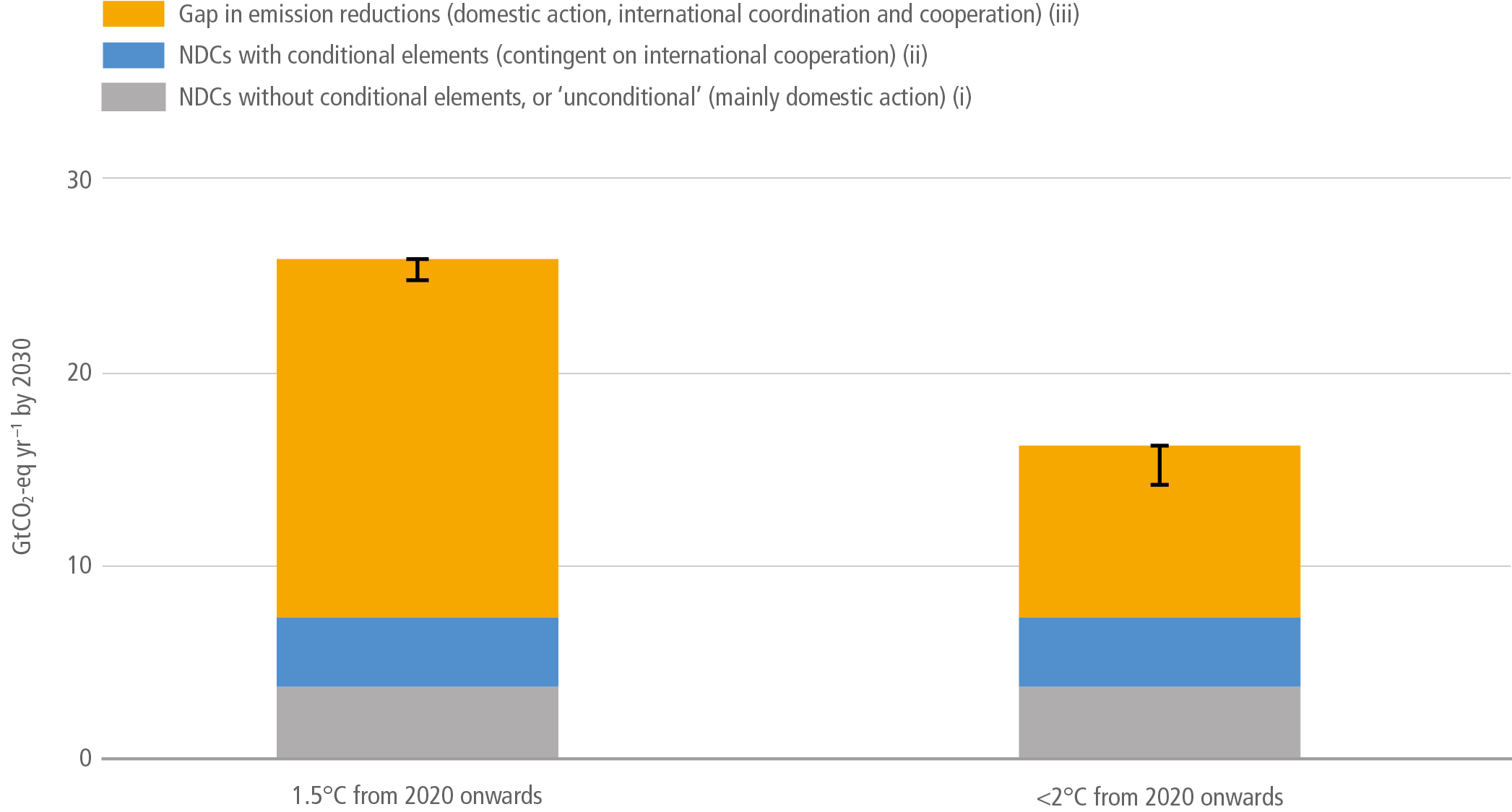Figure 14.2
Figure caption
Figure 14.2 | The role of international cooperation in the reductions in annual emissions by 2030 needed to follow a 1.5°C (respectively <2°C) cost-effective path from 2020 onwards. The figure represents the additional contribution of pledges included in the NDCs over current policies at the global level, and the remaining gap in emissions reductions needed to move from current policies to pathways that limit warning to 1.5°C (>50%) with no or limited overshoot, and those to limit warming to 2°C (>67%). Median values are used, showing the confidence interval for the total effort. See Figure 1 in Cross-Chapter Box 4 in Chapter 4, and Tables 4.2 and 4.3 for details. (i) The grey share represents NDCs with abatement efforts pledged without any conditions (called ‘unconditional’ in the literature). They are based mainly on domestic abatement actions, although countries can use international cooperation to meet their targets. (ii) The blue share represents NDCs with conditional components. They require international cooperation, for example bilateral agreements under Article 6, financing or monetary and/or technological transfers. (iii) The remaining gap in emissions reductions – the yellow share – can potentially be achieved through national and international actions. International coordination of more ambitious efforts promotes global ambition and international cooperation provides the cost-saving basis for more ambitious NDCs.
